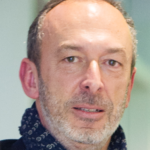Link to DOI – 10.2139/ssrn.4761599
This paper develops a generative statistical model for representing, modeling, and analyzing time-series of planar shapes. It uses elastic shape analysis to separate object kinematics (movement, rotation, and speed) from its morphology and represents morphological changes using transported velocity fields (TVFs). This TVF representation, followed by a PCA-based dimension-reduction, provides a convenient Euclidean time-series representation of a shape sequence. Fitting a vector auto-regressive (VAR) model to this TVF-PCA time series leads to statistical modeling of the overall shape dynamics. We use the parameters of the fitted VAR model to characterize morphological evolution. We validate VAR models through model comparisons, synthesis, and sequence classifications. For classification, we use the VAR parameters in conjunction with different classifiers: SVM, Random Forest, and CNN, and obtain high classification rates. Extensive experiments using cell motility data demonstrate the success of the proposed pipeline. These results are the first in classifying migrating cells using timeseries of shapes.



